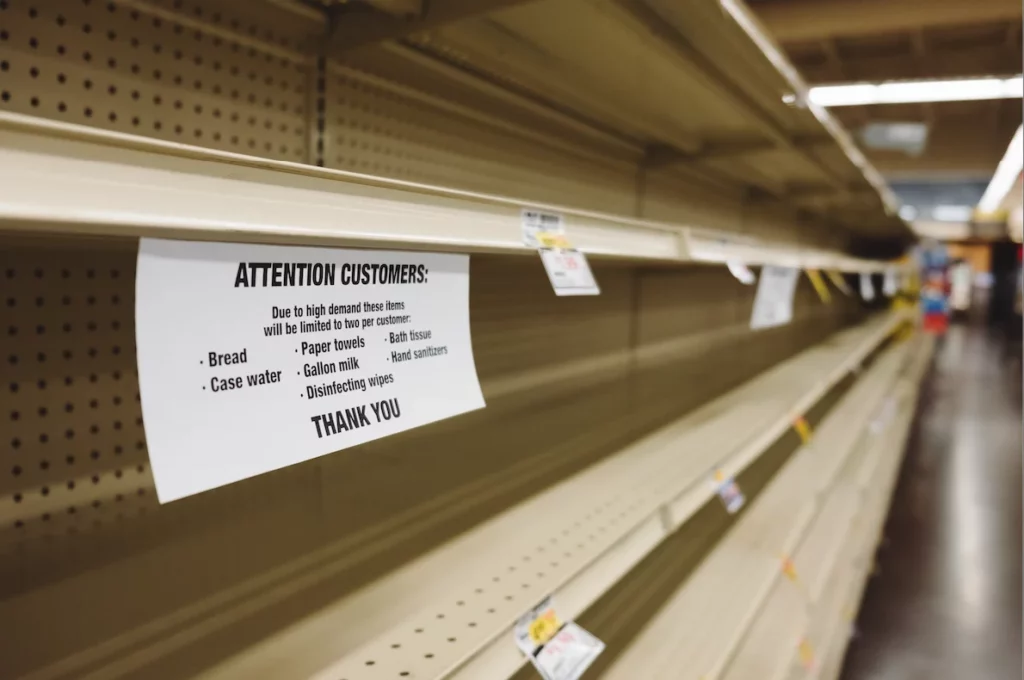
In the dynamic world of supply chain management and inventory control, understanding the concept of stockout costs is paramount to the success of any business. Stockouts, the dreaded scenario where a company runs out of a product or inventory, can have far-reaching consequences. These consequences can range from dissatisfied customers to financial losses and damaged reputations. Therefore, it becomes essential for businesses to not only comprehend what stockout costs entail but also to learn effective strategies to prevent them.
This article delves into the critical aspects of stockout costs, shedding light on the financial, operational, and customer-related implications of running out of stock.
What are stockout costs?

Stockout costs, also known as stockout expenses or stockout penalties, are the costs and negative consequences associated with running out of inventory or not having enough products or materials on hand to meet customer demand. These costs can have a significant impact on a business’s profitability and customer satisfaction.
What causes stockouts?
Stockouts, or situations where a business runs out of inventory, can be caused by a variety of factors. Here are five common reasons for stockouts:
Inaccurate Demand Forecasting
Poor forecasting of customer demand is a major cause of stockouts. If a business underestimates the demand for a particular product, it may not order enough inventory to meet customer needs, resulting in stockouts.
Lead Time Variability
Lead time refers to the time it takes to restock inventory after an order is placed with suppliers. Variability in lead times, such as delayed shipments or unpredictable supplier schedules, can lead to stockouts if inventory is not managed to accommodate such variability.
Inadequate Safety Stock
Safety stock is extra inventory kept on hand as a buffer to account for unexpected increases in demand or delays in procurement. Insufficient safety stock levels can leave a company vulnerable to stockouts when demand spikes or supply chain disruptions occur.
Supplier Issues
Stockouts can be caused by problems on the supplier’s end, such as production delays, quality issues, or sudden changes in supplier relationships. These issues can disrupt the supply of products, resulting in stockouts.
Seasonal Variations and Promotions
Businesses that experience seasonal demand variations or promotional events may not adequately prepare for increased customer interest during these periods. Failure to adjust inventory levels to account for these fluctuations can lead to stockouts when demand surges.
It’s important for businesses to address these potential causes of stockouts through effective inventory management practices, demand forecasting, and supply chain management. This includes optimizing safety stock levels, improving demand forecasting accuracy, and having contingency plans in place for supply chain disruptions.
How a stockout affects your business

Stockouts can have several significant negative impacts on a business, including:
Lost Sales and Revenue
The most direct and immediate consequence of stockouts is lost sales and revenue. When a business is unable to meet customer demand due to stockouts, it misses out on potential sales, which can have a direct and negative impact on its top-line revenue.
Customer Dissatisfaction and Churn
Stockouts can lead to customer dissatisfaction, as customers may be inconvenienced, frustrated, or disappointed when they can’t purchase the products they want. This can result in a negative customer experience and, in some cases, lead to customers switching to competitors.
Reputation Damage
Consistent stockouts can harm a business’s reputation. Customers may perceive the company as unreliable or poorly managed if they frequently encounter empty shelves or unavailable products. A damaged reputation can have long-term consequences for brand loyalty and customer trust.
Overall, stockouts not only result in immediate financial losses but also have the potential to erode customer relationships and harm a business’s long-term prospects. To mitigate these effects, businesses often focus on improving inventory management, demand forecasting, and supply chain reliability.
How to prevent stockouts
Preventing stockouts is crucial for maintaining smooth operations, satisfying customers, and preserving revenue. Here are three key strategies to help prevent stockouts:
Effective Inventory Management
Implementing efficient inventory management practices is essential to prevent stockouts. Consider the following steps:
- Set appropriate reorder points: Determine the optimal inventory level at which to reorder products to ensure that you replenish stock before it runs out.
- Establish safety stock: Maintain a buffer of safety stock to account for fluctuations in demand and lead times. The amount of safety stock can be based on historical data and demand variability.
- Regularly review and update stock levels: Continuously monitor inventory levels, adjusting them as needed to match changing demand patterns and supplier lead times.
Accurate Demand Forecasting
To prevent stockouts, it’s crucial to accurately predict customer demand. Effective demand forecasting can help businesses plan their inventory levels more accurately, reducing the likelihood of shortages. Some steps to improve demand forecasting include:
- Analyze historical sales data and patterns.
- Consider market trends, seasonality, and external factors that may impact demand.
- Use forecasting tools and software to make more accurate predictions.
Supply Chain Management
A reliable and efficient supply chain is essential for preventing stockouts caused by supplier-related issues. Key supply chain management strategies include:
- Diversify suppliers: Work with multiple suppliers or have backup suppliers in case your primary source encounters problems.
- Improve communication with suppliers: Maintain open lines of communication to stay informed about potential disruptions and delays.
- Monitor supplier performance: Regularly assess your suppliers’ performance and reliability to identify and address any issues proactively.
Additionally, implementing inventory control systems, investing in technology such as inventory management software, and conducting regular inventory audits can further assist in preventing stockouts. It’s important to strike a balance between carrying enough inventory to meet customer demand while avoiding overstocking, as excess inventory can also be costly.